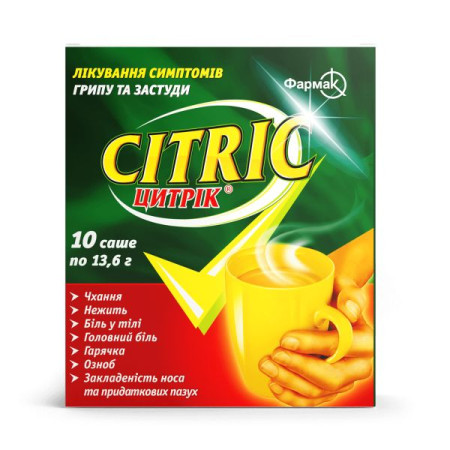Letrozole Astra film-coated tablets 2.5 mg blister No. 30

Instructions Letrozole Astra film-coated tablets 2.5 mg blister No. 30
Composition
active ingredient: letrozole;
1 tablet contains letrozole 2.5 mg;
excipients: colloidal anhydrous silica; microcrystalline cellulose; lactose, monohydrate; magnesium stearate; corn starch; sodium starch glycolate; coating: hypromellose; polyethylene glycol 6000; titanium dioxide (E 171).
Dosage form
Film-coated tablets.
Main physicochemical properties: round tablets with a biconvex surface, coated with a white film coating.
Pharmacotherapeutic group
Agents used for hormonal therapy. Hormone antagonists and similar agents. Aromatase inhibitors. Letrozole. ATC code L02B G04.
Pharmacological properties
Pharmacodynamics.
Letrozole is a nonsteroidal aromatase inhibitor (estrogen biosynthesis inhibitor); an antitumor drug.
In cases where the growth of tumor tissue depends on the presence of estrogens, the elimination of their mediated stimulating effect is a prerequisite for the inhibition of tumor growth. In postmenopausal women, estrogens are formed mainly with the participation of the aromatase enzyme, which converts androgens synthesized in the adrenal glands (primarily androstenedione and testosterone) to estrone (E1) and estradiol (E2). Therefore, by means of specific inhibition of the aromatase enzyme, it is possible to achieve inhibition of estrogen biosynthesis in peripheral tissues and in tumor tissue.
Letrozole inhibits aromatase by competitively binding to the heme subunit of this enzyme, cytochrome P450, which leads to a decrease in estrogen biosynthesis in all tissues.
In healthy postmenopausal women, single doses of letrozole of 0.1 mg, 0.5 mg, and 2.5 mg reduce serum estrone and estradiol levels (compared to baseline) by 75–78% and 78%, respectively. The maximum reduction is achieved after 48–78 hours.
In postmenopausal women with advanced breast cancer, daily administration of letrozole at a dose of 0.1 to 5 mg reduces plasma levels of estradiol, estrone, and estrone sulfate by 75–95% of baseline. When the drug is used at a dose of 0.5 mg or more, in many cases the concentrations of estrone and estrone sulfate are found below the sensitivity limit of the method used to determine the hormones. This indicates that with these doses of the drug a more pronounced suppression of estrogen synthesis is achieved. Estrogen suppression was maintained throughout treatment in all patients.
Letrozole is a highly specific inhibitor of aromatase activity. No impairment of adrenal steroid hormone synthesis has been observed. In postmenopausal patients treated with letrozole at a daily dose of 0.1–5 mg, no clinically significant changes in plasma concentrations of cortisol, aldosterone, 11-deoxycortisol, 17-hydroxyprogesterone, adrenocorticotropic hormone (ACTH), or renin activity were observed. ACTH stimulation tests performed after 6 and 12 weeks of treatment with letrozole at daily doses of 0.1 mg, 0.25 mg, 0.5 mg, 1 mg, 2.5 mg, and 5 mg did not reveal any significant reduction in aldosterone or cortisol synthesis. Thus, there is no need to prescribe glucocorticoids or mineralocorticoids.
In healthy postmenopausal women, after a single dose of letrozole at doses of 0.1 mg, 0.5 mg and 2.5 mg, no changes in the concentration of androgens (androstenedione and testosterone) in the blood plasma were detected. In postmenopausal patients who received letrozole at a daily dose of 0.1 to 5 mg, no changes in the level of androstenedione in the blood plasma were also noted. All this indicates that the blockade of estrogen biosynthesis does not lead to the accumulation of androgens, which are estrogen precursors. In patients receiving letrozole, no changes in the concentrations of luteinizing and follicle-stimulating hormones in the blood plasma were noted, and no changes in thyroid function, which was assessed by the levels of thyroid-stimulating hormone, T4 and T3, were noted.
Pharmacokinetics.
Absorption
Letrozole is rapidly and completely absorbed from the gastrointestinal tract (mean bioavailability is 99.9%). Food slightly reduces the rate of absorption (mean time to reach maximum blood concentration of letrozole (tmax) is 1 hour when taking letrozole on an empty stomach and 2 hours when taken with food; mean maximum blood concentration of letrozole (Cmax) is 129±20.3 nmol/l when taken on an empty stomach and 98.7±18.6 nmol/l when taken with food), but the extent of absorption of letrozole (as assessed by the area under the concentration-time curve (AUC)) does not change. Minor changes in the rate of absorption are considered to be of no clinical significance, so letrozole can be used regardless of food intake.
Distribution
Letrozole is approximately 60% bound to plasma proteins (55% mainly to albumin). The concentration of letrozole in erythrocytes is approximately 80% of its plasma level. After administration of 2.5 mg of 14C-labeled letrozole, approximately 82% of the radioactivity in plasma was accounted for by unchanged active substance. Therefore, the systemic exposure of letrozole metabolites is negligible. Letrozole is rapidly and extensively distributed in tissues. The apparent volume of distribution at steady state is approximately 1.87±0.47 l/kg.
Letrozole is extensively metabolised to a pharmacologically inactive carbinol metabolite (the main route of elimination). The metabolic clearance of letrozole (CLm) is 2.1 l/h, which is less than the hepatic blood flow (approximately 90 l/h). It has been shown that CYP3A4 and CYP2A6 isoenzymes of cytochrome P450 are capable of converting letrozole to its metabolite. The formation of a small number of other, as yet unidentified metabolites, as well as the excretion of unchanged drug in urine and faeces, play only a minor role in the overall elimination of letrozole.
Breeding
The apparent terminal plasma elimination half-life is approximately 2–4 days. After daily administration of 2.5 mg, steady-state concentrations of letrozole are reached within 2–6 weeks and are approximately 7 times higher than those after a single dose. However, the steady-state concentration is 1.5–2 times higher than that predicted from calculations based on single doses. This suggests that the pharmacokinetics of letrozole at a daily dose of 2.5 mg are somewhat non-linear. Since steady-state concentrations are maintained during long-term treatment, it can be concluded that letrozole does not accumulate.
Linearity/nonlinearity
The pharmacokinetics of letrozole were dose proportional after a single oral dose of up to 10 mg (dose range 0.01 to 30 mg) and after daily doses of up to 1.0 mg (dose range 0.1 to 5 mg). A small but more than dose-proportional increase in AUC was observed after a single oral dose of 30 mg. The dose disproportionality is likely a result of saturation of metabolic elimination processes. Steady-state concentrations were reached after 1–2 months at all dose regimens studied (0.1–5.0 mg daily).
Pharmacokinetics in specific patient groups
Elderly patients
The pharmacokinetics of letrozole are independent of age.
Patients with renal impairment
In studies conducted in volunteers with varying degrees of renal function (24-hour creatinine clearance ranging from 9 to 116 ml/min), the pharmacokinetics of letrozole were not affected after a single dose of 2.5 mg. No dose adjustment is required in patients with renal impairment (creatinine clearance ≥10 ml/min). Limited information is available in patients with severe renal impairment (creatinine clearance <10 ml/min).
Patients with liver dysfunction
In studies conducted in subjects with varying degrees of hepatic impairment, mean AUC values were reported to be 37% higher in subjects with moderate hepatic impairment (Child-Pugh B) than in healthy subjects, but remained within the range of values observed in subjects without hepatic impairment. Therefore, Letrozole Astra should be used with caution in subjects with severe hepatic impairment, taking into account the benefit/risk balance for each individual patient.
Indication
Adjuvant therapy of hormone-positive invasive early breast cancer in postmenopausal women.
Extended adjuvant therapy for early invasive breast cancer in postmenopausal women who have received standard adjuvant tamoxifen therapy for 5 years.
First-line therapy for hormone-dependent advanced breast cancer in postmenopausal women.
Treatment of advanced forms of breast cancer in postmenopausal women (natural or induced) after recurrence or progression of the disease, who have received previous anti-estrogen therapy.
Neoadjuvant therapy in postmenopausal women with hormone-positive, HER-2-negative breast cancer who are not suitable for chemotherapy and for whom urgent surgery is not indicated.
The effectiveness of the drug for patients with hormone-negative breast cancer has not been proven.
Contraindication
Hypersensitivity to the active substance or to any other component of the drug.
Endocrine status typical of the premenopausal period.
Pregnancy or breastfeeding.
Women of reproductive age.
Interaction with other medicinal products and other types of interactions
There is currently no clinical experience with the use of letrozole in combination with estrogens or other anticancer drugs other than tamoxifen. Tamoxifen, other antiestrogenic drugs or estrogen-containing drugs may antagonize the pharmacological effects of letrozole. In addition, it has been shown that the plasma concentrations of letrozole are significantly reduced when tamoxifen and letrozole are used simultaneously. The simultaneous use of letrozole with tamoxifen, other estrogen antagonists or estrogens should be avoided.
Medicinal products that may increase letrozole serum concentrations
Inhibitors of CYP3A4 and CYP2A6 activity may reduce the metabolism of letrozole and thus increase the plasma concentration of letrozole. Concomitant use of medicinal products that strongly inhibit these enzymes (potent inhibitors of CYP3A4 include, but are not limited to: ketoconazole, itraconazole, voriconazole, ritonavir, clarithromycin and telithromycin; CYP2A6 (e.g. methoxsalen)) may increase exposure to letrozole. Therefore, caution is advised in patients who are indicated for use of potent inhibitors of CYP3A4 and CYP2A6.
Medicinal products that may decrease letrozole serum concentrations
CYP3A4 inducers may increase the metabolism of letrozole and thus reduce the plasma concentration of letrozole. Concomitant use of medicinal products that induce CYP3A4 (e.g. phenytoin, rifampicin, carbamazepine, phenobarbital and St. John's wort) may reduce the exposure of letrozole. Therefore, caution is advised in patients who are indicated for potent CYP3A4 inducers. CYP2A6 inducers are unknown.
Concomitant use of Letrozole Astra (2.5 mg) and tamoxifen 20 mg once daily resulted in an average 38% decrease in plasma levels of letrozole. Clinical experience from second-line breast cancer studies suggests that the therapeutic effect of letrozole treatment, as well as the incidence of adverse reactions, were not increased when Letrozole Astra was administered immediately after tamoxifen. The mechanism of this interaction is unknown.
Drugs whose systemic serum concentrations may be altered by letrozole
In vitro, letrozole inhibits the cytochrome P450 isoenzymes CYP2A6 and, to a lesser extent, CYP2C19, but the clinical significance of this effect is unknown. However, caution should be exercised when co-administering letrozole with drugs whose elimination is predominantly dependent on CYP2C19 and which have a narrow therapeutic range (such as phenytoin, clopidogrel). A substrate with a narrow therapeutic range for CYP2A6 is unknown.
Clinical interaction studies with cimetidine (a known non-specific inhibitor of CYP2C19 and CYP3A4) and warfarin (a sensitive substrate for CYP2C9 with a narrow therapeutic range, which is often used as a concomitant medication in the target population of letrozole) showed that the co-administration of letrozole and these medicinal products does not cause clinically significant drug interactions.
A review of the database of these clinical studies revealed no evidence of other clinically significant interactions with other commonly prescribed drugs.
Application features
Kidney dysfunction
There are no data on the use of letrozole in patients with creatinine clearance less than 10 ml/min. Before prescribing the drug to such patients, the following should be considered:
the ratio of potential risk and expected treatment effect.
Cholesterol
Monitoring of serum cholesterol levels should be considered. Hypercholesterolemia has been reported in patients taking letrozole and in patients taking tamoxifen. In addition, increases in total cholesterol (usually not in the fasting state) have been reported in patients taking letrozole, in patients who had normal baseline total serum cholesterol levels, and some of these patients required lipid-lowering medications.
Liver dysfunction
In patients with severe hepatic impairment (Child-Pugh class C), systemic exposure and half-life of letrozole are approximately twice as long as in healthy subjects. Such patients require closer monitoring.
Effect on bones
Since letrozole is a potent estrogen-lowering agent, during adjuvant and extended adjuvant therapy with letrozole in women with osteoporosis and/or a history of fractures or those at increased risk of osteoporosis, bone mineral density should be assessed before, during, and after treatment with letrozole.
In the adjuvant setting, sequential therapy (2 years of letrozole followed by 3 years of tamoxifen) may also be considered depending on the patient's safety profile (see sections 4.8 and 4.8).
Menopausal status
In patients with unclear menopausal status, luteinizing hormone (LH), follicle-stimulating hormone (FSH) and/or estradiol levels should be determined before starting treatment with letrozole. Only women with postmenopausal endocrine status should receive letrozole.
Tendinitis and tendon rupture are possible (rarely). Patients should be carefully examined and appropriate measures (e.g. immobilization) should be taken for the affected tendon (see section 4.8).
Laboratory abnormalities
There was no dose-related effect of letrozole on any haematological or biochemical parameters. Moderate decreases in lymphocyte counts of uncertain clinical significance were observed in some patients treated with letrozole at a dose of 2.5 mg. These decreases in lymphocyte counts were transient in approximately half of the affected patients. Thrombocytopenia was reported in two patients treated with letrozole, the relationship to letrozole being unclear.
Other caveats
The concomitant use of letrozole and tamoxifen, other estrogen antagonists or estrogen-containing medicinal products should be avoided, as these agents may antagonize the pharmacological effects of letrozole (see section 4.5).
The drug contains lactose, therefore patients with rare hereditary forms of galactose intolerance, severe lactase deficiency or glucose-galactose malabsorption syndrome should not use the drug.
Use during pregnancy or breastfeeding
Perimenopausal women or women of reproductive age
Letrozole should only be used in women who are clearly postmenopausal. Spontaneous abortions or congenital anomalies have been reported in infants born to mothers who have taken letrozole. Given the reports of recovery of ovarian function in women treated with letrozole despite clearly postmenopausal status at the start of therapy, the physician should discuss adequate contraceptive measures with the patient, as appropriate.
Pregnancy
Based on human experience with letrozole and isolated cases of congenital malformations (fusion of labia minora, intermediate external genitalia), letrozole may cause congenital malformations when administered during pregnancy. Animal studies have shown reproductive toxicity.
Letrozole is contraindicated for use during pregnancy.
Breast-feeding
It is not known whether letrozole and its metabolites are excreted in human milk. A risk to the newborn infant cannot be excluded.
Letrozole is contraindicated for use during breastfeeding.
Fertility
The pharmacological action of letrozole is to reduce estrogen production by inhibiting aromatase. In premenopausal women, inhibition of estrogen synthesis leads to increased levels of gonadotropins (LH, FSH). In turn, increased levels of FSH stimulate follicular growth and can induce ovulation.
Ability to influence reaction speed when driving vehicles or other mechanisms
Letrozole has little effect on the ability to drive or use machines. Since patients may experience general weakness and dizziness, and in some cases drowsiness, during treatment with Letrozole Astra, caution is recommended when driving or operating complex machinery.
Method of administration and doses
Adults, including elderly patients. The recommended dose of Letrozole Astra is 2.5 mg once daily. In the adjuvant and extended adjuvant setting, letrozole treatment should be continued for 5 years or until disease relapse occurs. In patients with metastases, letrozole therapy should be continued until signs of disease progression become evident. In the adjuvant setting, the possibility of using a sequential therapy regimen (letrozole for 2 years followed by tamoxifen for 3 years) should also be considered.
In the neoadjuvant setting, Letrozole therapy should be continued for 4-8 months to achieve optimal tumor reduction. If the response to treatment is inadequate, therapy should be discontinued and elective surgery should be performed and/or further treatment options discussed with the patient.
For elderly patients, dose adjustment of the drug is not required.
Children. The drug is not used to treat children. The safety and efficacy of letrozole in children have not been established. Available data are limited, so it is not possible to develop dosage recommendations.
Patients with hepatic and/or renal impairment. No dose adjustment is required for patients with mild to moderate hepatic impairment (Child-Pugh class A and B) or renal impairment (creatinine clearance ≥10 ml/min). There are insufficient data in patients with renal impairment with creatinine clearance <10 ml/min or severe hepatic impairment. Patients with severe hepatic impairment (Child-Pugh class C) require close monitoring.
Method of application
The missed dose should be taken as soon as the patient remembers. However, if the patient remembers shortly before the next dose (2-3 hours), the missed dose should be skipped and the next dose should be taken as scheduled. A double dose should not be taken, as systemic exposure greater than proportional has been observed with daily doses higher than the recommended 2.5 mg.
Children.
The drug is not used in children, as the efficacy and safety of the drug for this category of patients have not been studied in clinical trials.
Overdose
Isolated cases of overdose with letrozole have been reported.
Specific treatment for overdose is unknown; treatment should be symptomatic and supportive.
Side effects
Letrozole monotherapy
Letrozole-
>tamoxifen
Tamoxifen –
>Letrozole
N=1535
N=1527
N=1541
5 years
2 years – >3 years
2 years – >3 years
Bone fractures
10.0%
7.7%*
9.7%
Endometrial proliferative disorders
0.7%
3.4%**
1.7%**
Hypercholesterolemia
52.5%
44.2%*
40.8%*
Hot flashes
37.6%
41.7%**
43.9%**
Vaginal bleeding
6.3%
9.6%**
12.7%**
* Significantly less than in the drug monotherapy group.
** Significantly higher than in the drug monotherapy group.
Note: The notification period includes the treatment period or 30 days after treatment is discontinued.
Description of selected adverse reactions
Cardiac adverse reactions
In the adjuvant setting, in addition to those presented in Table 1, the following adverse events were reported with letrozole and tamoxifen, respectively (with a median duration of treatment of 60 months plus 30 days): angina requiring surgery (1.0% vs. 1.0%); heart failure (1.1% vs. 0.6%); hypertension (5.6% vs. 5.7%); cerebral circulation disorder/transient ischemic attack (2.1% vs. 1.9%).
In the extended adjuvant setting, the following adverse events were reported with letrozole (median duration of treatment 5 years) and placebo (median duration of treatment 3 years), respectively: angina requiring surgery (0.8% vs. 0.6%); new angina or worsening angina (1.4% vs. 1.0%); myocardial infarction (1.0% vs. 0.7%); thromboembolic event* (0.9% vs. 0.3%); stroke/transient ischemic attack* (1.5% vs. 0.8%).
The frequency of events marked with * was statistically significantly different between the two treatment groups.
Musculoskeletal adverse reactions
Musculoskeletal safety data obtained in the adjuvant setting are presented in Table 1.
In the extended adjuvant setting, bone fractures or osteoporosis were observed in a statistically significantly higher number of patients in the letrozole group (bone fractures – 10.4% and osteoporosis – 12.2%) than in the placebo group (5.8% and 6.4%, respectively). The median duration of treatment was 5 years for letrozole compared to 3 years for placebo.
Reporting of suspected adverse reactions.
Reporting suspected adverse reactions after the registration of a medicinal product is important. This allows for continuous monitoring of the benefit/risk balance of the medicinal product. Healthcare professionals are required to report any suspected adverse reactions through the pharmacovigilance system.
Expiration date
3 years.
Storage conditions
Store in the original packaging at a temperature not exceeding 25 °C.
Keep out of reach of children.
Packaging
10 tablets in a blister; 3 blisters in a cardboard box.
Vacation category
According to the recipe.
Producer
"ASTRAPHARM" LLC.
Address
Ukraine, 08132, Kyiv region, Kyiv-Svyatoshynskyi district, Vyshneve, Kyivska st., 6.
There are no reviews for this product.
There are no reviews for this product, be the first to leave your review.
No questions about this product, be the first and ask your question.










